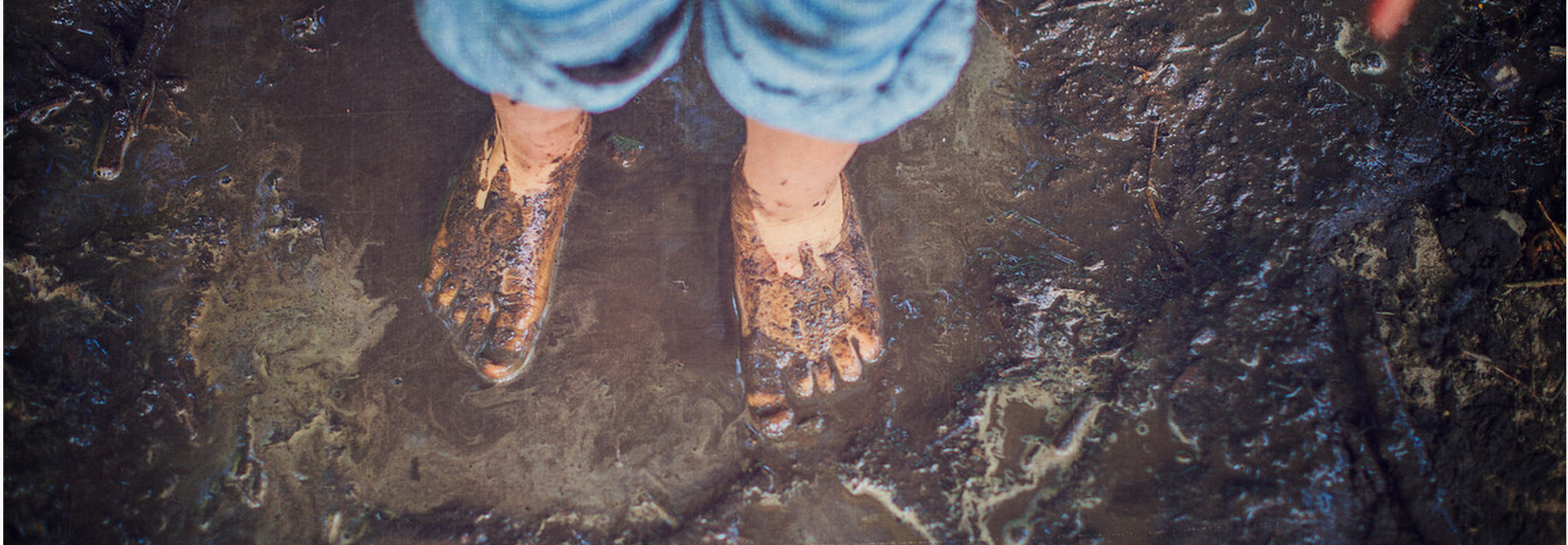Nature Nectar or Potions
-
Age: 0 to 8
-
Time: Under 1 hour
-
Materials: glass jar per kid, water
- Skills: Creativity, Imagination, Behavioral Schema, Sensory
With so much blooming and bursting in spring and summer, it's the perfect time for kids to make nature nectar or nature potions. That said, such concoctions can be made nearly all year, taking advantage of the unique things nature pops, drops and sprouts in any season.
It turns out, mixture-making is a perfectly engaging pursuit for kids. What can kids put in such a mixture? A splash of water, then anything else they want. Just grab a glass jar for each kid, bring some water and head outdoors. Endless ingredients and potential concoctions await.
This activity is featured in our Tinkergarten Home Spring Creativity series. Not yet signed up? Click here to sign up or to try a free Tinkergarten Home lesson.
It turns out, mixture-making is a perfectly engaging pursuit for kids. What can kids put in such a mixture? A splash of water, then anything else they want. Just grab a glass jar for each kid, bring some water and head outdoors. Endless ingredients and potential concoctions await.
This activity is featured in our Tinkergarten Home Spring Creativity series. Not yet signed up? Click here to sign up or to try a free Tinkergarten Home lesson.
The Guide
Step 1: Pick a context that works for you.
Many, many families love and lean into the idea of magic potion. Young children take to this since they naturally and readily blend reality and fantasy as part of their development. And, we know that pretend play is marvelous for developing brains and hearts! That said, not all families connect to or feel comfortable with contexts that include elements of magic. So, please pick the context that works for you! Whether nature potions, nectar, soup or more—the learning opportunities are still superb.
Step 2: Invite play.
Offer kids a clear container (e.g. pint-sized mason jar, recycled jar) with enough water to fill the jar about half way. Ask, “What can you put in a nature nectar (or potion)?” Accept any responses and share that the real answer is anything you want! Where will we find ingredients? All around us!
Step 3: Hunt for ingredients.
Kids set aside the glass jars and use a bag, sack or a bindle to gather all kinds of ingredients like fallen petals from flowering trees, clovers, leaves, dandelions, freshly cut (or ripped) grass, dirt, bark and more. Once kids have a good bunch of ingredients, let them know they can circle back when ready to turn them into a potion/nectar/mixture. Remind them that they can always go off again in search of more.
Step 4: Make a mixture!
Kids can add found ingredients to their pots. Then, they do whatever it takes to mix up their ingredients: use sticks to stir; get a stubby piece of wood to mash it; put the top on and shake it up. Let them do their thing and give them plenty of time.
Step 5: Support play.
- Offer a special ingredient or two: You can hunt for or bring along a few different materials that could enhance kids' sensory experience. Some ideas: lilacs or other scented petals; spices like turmeric or paprika; or dried lavender (our favorite).
- Chat: As they are working, ask them what they notice about their concoction. If you don’t get much back, ask to see it. Ask something about its appearance (“What do you notice about the water? Does it look the same as when you started?”). Or, ask to smell the potion, and ooo and ahh. This should prompt them to observe, notice and talk with you about the mixture as well as their process.
- Make some magic: If you chose to go with potion-making, ask kids, “How do we make this potion a magic potion?” Accept all ideas. Suggest that just by sniffing it, you can pretend to be anything you want. Then, let the kids suggest a creature. Take a big sniff and go with it, acting and sounding like whatever kids suggest. From squirrels to lions to birds to ninja turtles, just go with it. They'll have a blast pretending with you.
Step 6: Revisit.
Keep the jar handy—Once kids start making mixtures, they tend to want to make them again and again.
Why is this activity great for kids?
Making mixtures never gets old, and if your kids haven’t ever tried, this will give them a tool for play and investigation they can (and likely will) use again and again. As kids make their mixtures, they not only flex their senses of sight, touch and smell, but they also strengthen their ability to integrate their senses. For kids of age 18 months through about 5 years, there is a set of repetitive behaviors that kids of this age all over the world exhibit and that are tied to critical brain development, called "behavioral schema." Gathering ingredients, mashing and mixing as well as stirring activate transporting, transforming and circulation schema. Wow. Who knew how much learning was mixed up in mixture-making!






